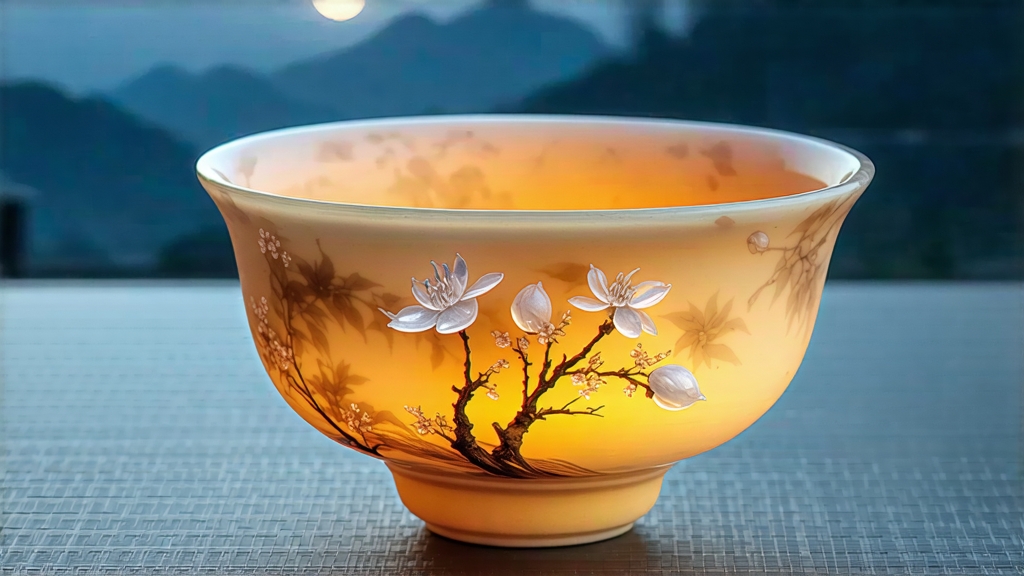
If green tea is the youthful murmur of spring and pu-erh the gravelly wisdom of age, then white tea—especially the luminous Bai Hao Yin Zhen, literally “White-Hair Silver Needle”—is the quiet breath between heartbeats. Revered by Chinese literati as “the tea that tastes of moonlight,” Silver Needle is the least manipulated of all Camellia sinensis offerings, yet paradoxically the most elusive to perfect. Its story begins not with emperors or trading caravans but with a soft footstep: the hush of a tea picker entering the garden before dawn, when dew still beads on the unopened leaf and the air smells of starlight and wet bamboo.
Historical whispers place the birth of white tea in the Song dynasty (960-1279), when imperial tribute lists mention “white cakes” pressed from downy buds. Those cakes, however, were green tea that had been lightly steamed and dried; the modern concept of un-pressed, simply withered white tea crystalised much later, in the coastal counties of Fujian during the late eighteenth century. Fuding and Zhenghe, two counties divided by the Taimu mountain range, began exporting needle-shaped buds down the Min River to the port of Fuzhou, where foreign merchants mistook the silvery fuzz for mould and nearly rejected the cargo. One tasting changed everything: the liquor was the colour of late-afternoon sunlight, the flavour a suggestion of honeydew, hay and the cool skin of a pear. By the 1890s Silver Needle had become one of China’s most expensive teas, priced higher than Da Hong Pao and gifted to the last Qing court in exchange for honorary buttons of mandarin rank.
Strictly speaking, only two cultivars are sanctioned for authentic Silver Needle: Fuding Da Bai (“Big White”) and Zhenghe Da Bai. The former yields plumper buds with a thicker trichome layer, giving a creamier texture; the latter produces slimmer, more aromatic buds that lean toward floral lift. A single kilogram demands roughly thirty-eight thousand buds, all picked within a narrow spring window—ideally the first warm days after Qingming festival when the dew point lingers just above 10 °C. Pickers use bamboo baskets lined with banana leaf to prevent compression; any bruise oxidises into an unsightly red tip that will fail Ministry of Commerce grading standards.
Once in the factory, the buds undergo nothing more violent than a gentle tumble onto woven bamboo trays. There is no pan-firing, no rolling, no kneading. The only agent of transformation is air: first the natural breeze of a shaded corridor, then the controlled sigh of a dehumidified withering room held at 26 °C and 65 % relative humidity. Over the course of forty-eight hours the moisture content drops from 75 % to 12 %, while endogenous enzymes nibble at polyphenols, generating a subtle chorus of floral lactones. In Fuding, traditionalists still lay the buds under full-moon nights, believing that lunar photons tighten the cellular wall and amplify luminescence in the cup. Science has yet to disprove the romance: spectral analysis shows that moon-lit withered buds retain marginally higher L-theanine, the amino acid responsible for umami calm.
The final step, slow charcoal baking, is performed only if the weather refuses to cooperate. A tiny basket of buds is placed above a pit of barely glowing bamboo charcoal whose temperature never exceeds 40 °C. The tea master listens rather than looks: when the rustle of buds against wicker shifts from damp sigh to crisp clink, the tea is done. Total processing time can stretch across three days, yet human hands touch each bud fewer than three times—an intimacy so restrained it borders on reverence.
Storage is the invisible craft. Silver Needle is not the wine of teas; it does not necessarily improve forever. Instead it evolves through three aromatic phases: the first six months are “bamboo fresh,” when chlorophyll and aldehydes still whisper of green gardens; between one and three years the tea enters its “honey era,” developing notes of dried apricot and sweet hay; beyond five years it may darken into “date richness,” but only if kept below 25 °C and 50 % humidity in unsealed clay jars that allow micro-oxygenation. A single orange-peel note can signal the onset of over-ageing, at which point